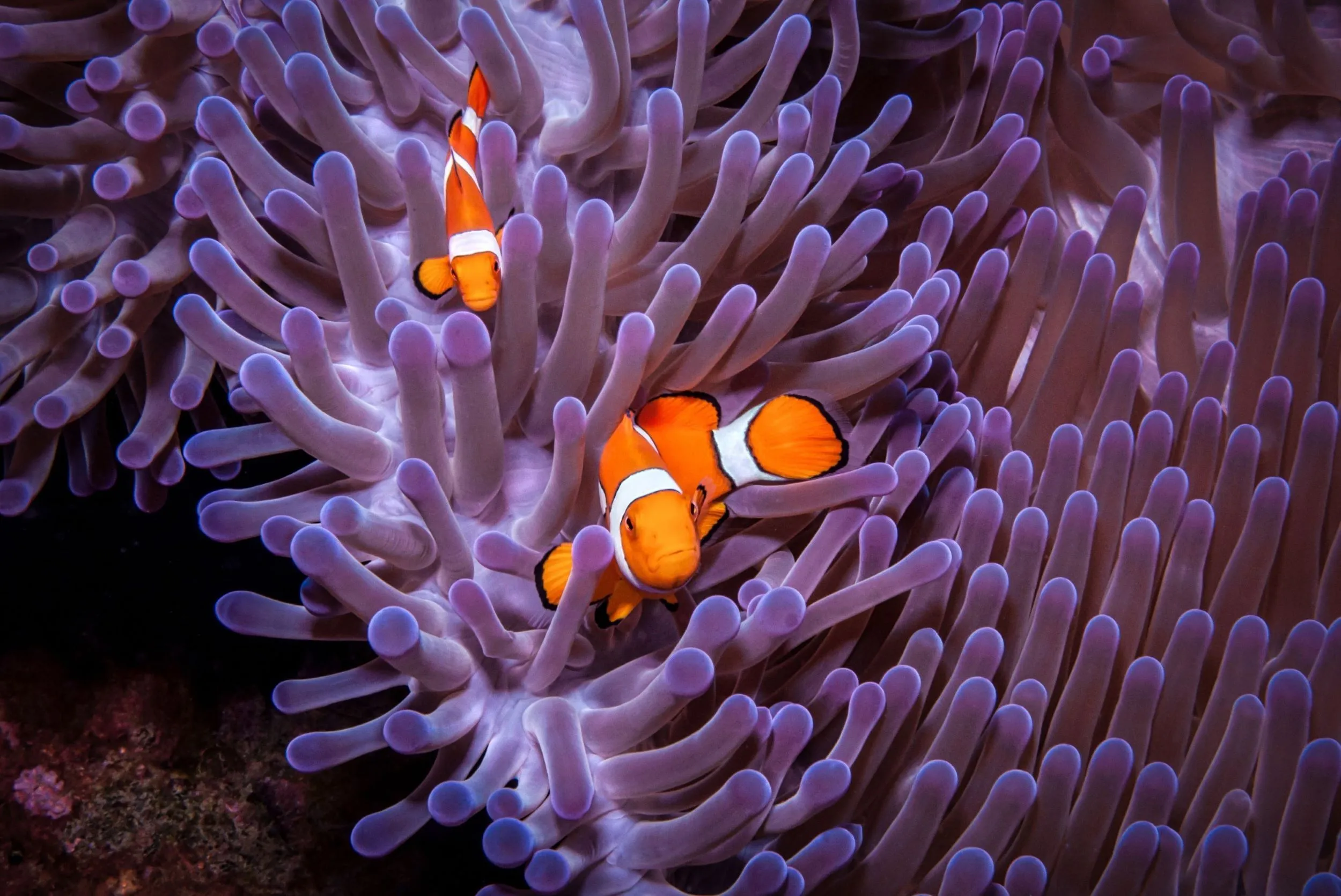Physical Address
304 North Cardinal St.
Dorchester Center, MA 02124

In the vibrant underwater world, symbiotic relationships form the cornerstone of many marine ecosystems. One of the most captivating and well-known partnerships is between clownfish and sea anemones. This article delves into the intricacies of this remarkable relationship, exploring the mutual benefits, biological mechanisms, and the fascinating behaviors that make it a subject of endless curiosity and scientific study.
The symbiotic relationship between clownfish and sea anemones is a mutualistic one, meaning both species benefit. Clownfish, with their bright colors and distinctive patterns, find a safe haven among the venomous tentacles of the anemone, which deter most predators. In return, clownfish provide the anemone with nutrients in the form of waste and help keep it clean by eating parasites and dead tentacles.
This relationship is a classic example of mutualism, where both parties gain significant advantages. Clownfish have a unique mucus coating that makes them immune to the anemone’s stings, allowing them to live safely among the tentacles. This adaptation not only provides them with protection but also places them in a prime position to scavenge for food particles that the anemone’s tentacles miss.
The immunity of clownfish to anemone stings is a result of a specialized mucus layer that prevents the nematocysts (stinging cells) from firing. This mucus is thicker than that of other fish and contains specific chemicals that inhibit the anemone’s sting. The exact composition of this mucus and how it evolved remains a fascinating area of research.
Anemones benefit from the presence of clownfish through increased water circulation caused by the fish’s movements. This helps the anemone breathe and obtain more oxygen and nutrients. Additionally, the waste produced by clownfish provides essential nutrients, enhancing the anemone’s growth and health.
Clownfish and anemones play vital roles in their ecosystems. Their partnership contributes to the biodiversity and health of coral reefs. By providing a habitat for clownfish, anemones indirectly support a variety of other species that interact with the reef ecosystem.
The presence of clownfish can also enhance the survival rates of anemones. Studies have shown that anemones hosting clownfish are more likely to thrive compared to those without clownfish. This symbiotic relationship helps maintain the balance and stability of reef communities, highlighting the interconnectedness of marine life.
Clownfish exhibit fascinating behaviors that are closely tied to their relationship with anemones. They perform a “dance” to acclimate themselves to the anemone’s stings, gently brushing against the tentacles to build up their mucus coating. This behavior is crucial for their survival and demonstrates an intricate level of adaptation and learning.
Furthermore, clownfish are known for their complex social structures and hierarchies. Within a group, the largest and most dominant individual is female, while the rest are males. If the dominant female dies, the largest male will change sex and become the new female. This remarkable ability to change sex is known as sequential hermaphroditism and ensures the continuity of their social structure and breeding potential.
Research on clownfish and anemone symbiosis has provided valuable insights into evolutionary biology, ecology, and marine conservation. Scientists have studied the genetic and biochemical mechanisms underlying their immunity to stings, uncovering potential applications in medicine and biotechnology.
The study of clownfish behavior has also contributed to our understanding of animal cognition and social dynamics. Observations of their interactions with anemones and other fish species have revealed complex communication systems and adaptive strategies that are essential for their survival.
Marine biologist Dr. Emily Roberts shares her experiences studying clownfish in the wild. “Watching these vibrant fish interact with their anemone hosts is truly mesmerizing,” she says. “Their intricate dances and social behaviors are a testament to the wonders of evolution and adaptation. Every dive brings new insights into their lives and their importance to the reef ecosystem.”
Clownfish have captured the imagination of people worldwide, thanks in part to popular culture. The 2003 animated film “Finding Nemo” brought clownfish into the spotlight, highlighting their unique relationship with anemones and sparking interest in marine conservation.
In many cultures, clownfish are seen as symbols of partnership and mutual support. Their symbiotic relationship with anemones serves as a powerful metaphor for cooperation and harmony in nature.
[Stunning Footage of Clownfish and Anemones Infographic: How Clownfish and Anemones]
The partnership between clownfish and anemones is a shining example of the intricate and harmonious relationships that sustain marine ecosystems. Their unique characteristics, biological mechanisms, and ecological roles make them a subject of endless fascination and scientific inquiry. By understanding and appreciating this symbiotic relationship, we not only satisfy our curiosity but also underscore the importance of preserving these delicate marine habitats.
As we continue to study and protect the ocean’s diverse inhabitants, the story of clownfish and anemones serves as a reminder of the beauty and complexity of life beneath the waves. Their symbiotic dance is a testament to the resilience and ingenuity of nature, offering valuable lessons about cooperation, adaptation, and the interconnectedness of all living things.